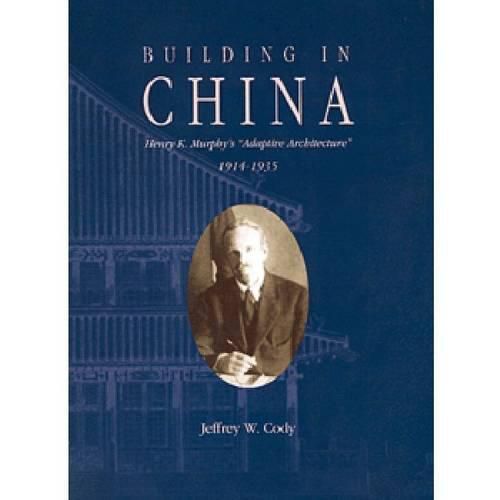Readings Newsletter
Become a Readings Member to make your shopping experience even easier.
Sign in or sign up for free!
You’re not far away from qualifying for FREE standard shipping within Australia
You’ve qualified for FREE standard shipping within Australia
The cart is loading…






Building in China is about striking an architectural balance between the pull of monumental tradition and the push of technological novelty. Centering on the dynamic period of post-imperial and pre-Communist China, the book focuses on the building and city planning initiatives of Henry Murphy, a little-known American architect who initially ventured to China in 1914 to design a campus for the Yale-in-China Program, but who then found himself captivated by a professional and cultural challenge that lasted two decades: how to preserve China’s rich architectural traditions while also designing new buildings using up-to-date Western technologies. Murphy’s buildings were compromises – new wine in old bottles as he once called them – and the book uses those bottles as lenses through which to understand not only Murphy’s quest to find a middle ground for his architecture in China, but also to gaze at a tumultuous society facing an uncertain future. Murphy’s buildings were more than vessels for either aesthetic visions or technical expertise; inadvertently they became political emblems, as Chinese rulers such as Chiang Kai-shek and Sun Yat-sen’s son called on Murphy for city planning advice to complement their hopes for urban reconstruction.There are few serious studies of Western architects in the twentieth century who practiced in non-Western contexts, and those scant studies that have been published concentrate largely on British, French or Dutch examples in colonial settings. Hence, the book makes significant contributions to the fields of both American and Chinese architectural history.
$9.00 standard shipping within Australia
FREE standard shipping within Australia for orders over $100.00
Express & International shipping calculated at checkout
Building in China is about striking an architectural balance between the pull of monumental tradition and the push of technological novelty. Centering on the dynamic period of post-imperial and pre-Communist China, the book focuses on the building and city planning initiatives of Henry Murphy, a little-known American architect who initially ventured to China in 1914 to design a campus for the Yale-in-China Program, but who then found himself captivated by a professional and cultural challenge that lasted two decades: how to preserve China’s rich architectural traditions while also designing new buildings using up-to-date Western technologies. Murphy’s buildings were compromises – new wine in old bottles as he once called them – and the book uses those bottles as lenses through which to understand not only Murphy’s quest to find a middle ground for his architecture in China, but also to gaze at a tumultuous society facing an uncertain future. Murphy’s buildings were more than vessels for either aesthetic visions or technical expertise; inadvertently they became political emblems, as Chinese rulers such as Chiang Kai-shek and Sun Yat-sen’s son called on Murphy for city planning advice to complement their hopes for urban reconstruction.There are few serious studies of Western architects in the twentieth century who practiced in non-Western contexts, and those scant studies that have been published concentrate largely on British, French or Dutch examples in colonial settings. Hence, the book makes significant contributions to the fields of both American and Chinese architectural history.